Encompassing multiple ecosystems from the high deserts and great plains to the Rocky Mountains, Colorado has its fair share of dangerous animals. Although the possibility of a harmful or fatal encounter is unlikely for most outdoor enthusiasts, incidents happen every year.
So, to help you prepare for your next wilderness excursion, we’ve rounded up the most threatening animals in the state. Native to the Rocky Mountains, this wildlife can be found from the front range to the western slope. Jump aboard this high-elevation safari as we explore the best ways to prevent a conflict with Colorado’s most dangerous wildlife.
Mountain Lions (Cougars)

If you ever get the feeling something is watching you, the last thing you want it to be is a mountain lion. Fast, stealthy, and camouflaged, these massive predators can grow up to 8 feet long and can weigh over 150 pounds. Equipped with menacing claws and sharp teeth, cougars are Colorado’s most notorious wild cat.
In the last thirty years, there have been 25 recorded mountain lion-on-human incidents in Colorado, with a high density in Boulder, Jefferson, and Larimer counties. Three of these encounters were fatal, with many of the other victims experiencing severe injuries.
Colorado is home to about 4,000 adult mountain lions, and predatory behavior is statistically abnormal for the species. Cougars typically mind their own business unless threatened or provoked. In some cases, an animal may be diseased, like in 2020, when a rabies-positive cougar attacked two separate people in west Loveland.

Never approach a mountain lion, and back away slowly if you encounter one in the wild. These animals do not like conflict and will avoid it when possible. That being said, never turn your back or run away, as this may simulate a chase and cause the cat to jump.
In the worst-case scenario, if a mountain lion attacks, fight back with anything and everything you have. Mountain lions rarely attack groups, so anyone alone in the woods can leverage knives, pepper spray, large sticks, or rocks to help defend against the unlikely potential of an attack.
CPW keeps tabs on big cats and helps relocate them if they stray too close to urban areas.
Black Bears
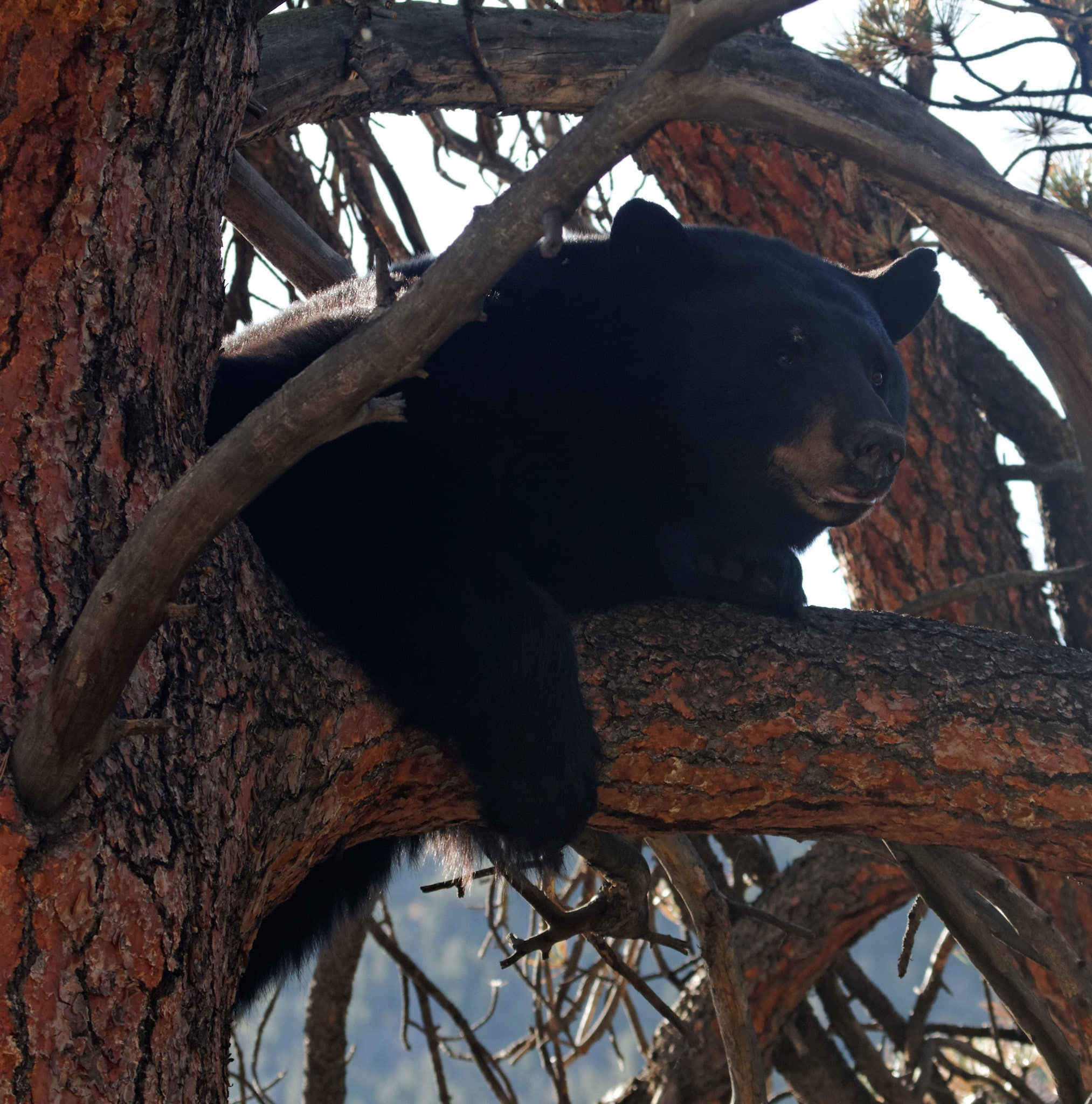
The last recorded grizzly was killed in 1979 in SW Colorado—ever since, black bears have been the only remaining species in Colorado. As opposed to their brown bear cousins, they are not naturally aggressive and are typically more interested in finding food than attacking people.
For this reason, the majority of black bear incidents occur near food sources such as mountain streams, campgrounds, or unsecured dumpsters. Unless they are actively rummaging through your property, black bears should be left in their natural habitat, with the least amount of human interaction possible.
To best avoid an encounter, any group heading into the wilderness should stay together at all times, make plenty of noise, and always keep food or trash within a sealed container. Should you find yourself face to face with one of these creatures, widen your stance and raise your arms to appear as large as possible; then, make as much noise as you can.
Black bears are normally skittish, and if you startle one, they will most likely run away from the source of the disturbance.

When dealing with a black bear, there are a few things you should never do. As with most wildlife, don’t turn your back to it. Additionally, never try to coax a bear closer to take a better picture. If you miss your opportunity to scare it, your primary deterrence strategy becomes ineffective.
In the rare scenario that a black bear starts to act threateningly, prepare to fight. Strategies include loud war cries, waving your arms back and forth intimidatingly, throwing objects at them, and even delivering a punch or kick to the animal’s snout when necessary.
Black bears are abundant across the USA, with sightings reported in 41 of 50 states. With such a widely distributed population, aggressive encounters do occur, and it’s estimated that roughly one person dies each year from a bear-related incident. An easy tool to carry into bear territory is a bottle of bear spray, which can be deployed as a last-resort survival technique.
Elk, Moose, and Deer
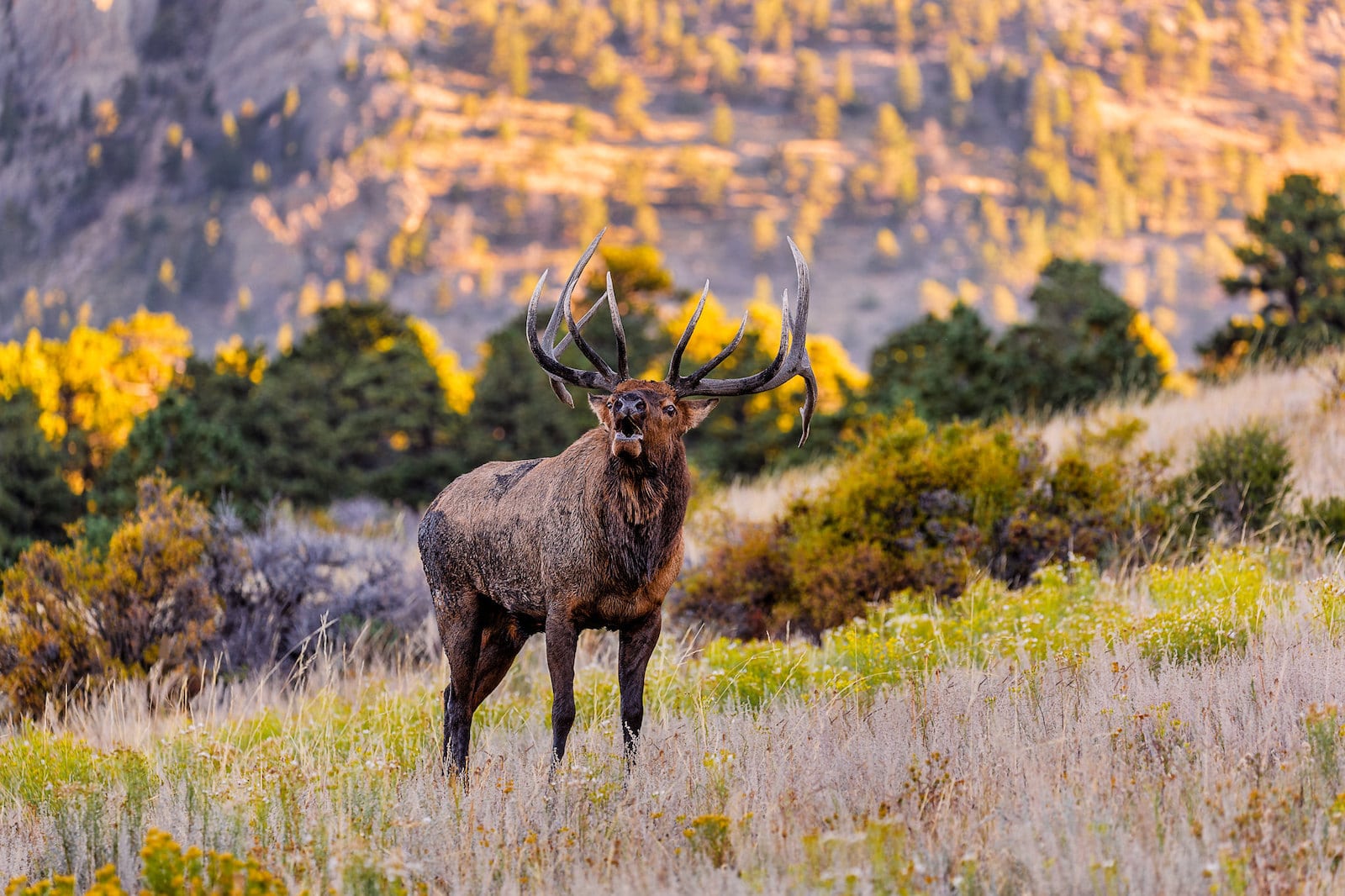
While there are hundreds of thousands of them throughout the state, unless you are a licensed and permitted hunter, there is no reason to approach an elk, deer, or moose in Colorado. While seemingly gentle, each of these antlered animals is potentially dangerous and able to charge with force, mass, and power.
Thankfully, most of the four-legged animals that hang around popular parks are used to seeing people and won’t attack unless provoked. When near an elk, moose, or deer, speak firmly and slowly walk backward if the animal appears threatening. When charged, do everything you can to find cover behind a barrier, such as a nearby rock or tree.
After being physically hit by an animal, the recommended procedures differ between elks, moose, and deer. If a moose knocks you down, play dead and curl yourself up into a ball. Never attempt to fight a moose.

When rammed by an elk, do not play dead; attempt to get up and run away at all costs. In the unlikely event of a deer attack, feigning death should only be used as a last resort.
Elk, moose, and deer attacks are very uncommon in Colorado, but incidents are recorded almost annually. The animals will only become aggressive when threatened, so make sure to view them from a safe distance and always avoid making sudden movements or loud noises in their presence.
Mountain Goats

Mountain goats are a powerful alpine species that must be approached with extreme caution. Peak baggers often encounter these horned and hoofed animals at high elevations, and most mountain goats are used to seeing humans. Generally, they will not act aggressively unless provoked.
Do not approach mountain goats, never throw anything at them, and try to keep your distance. If a mountain goat is standing in your path, consider waiting for it to move as you slowly back away, rather than encroaching on its space.
While very infrequent, people in North America have died as a result of an aggressive mountain goat attack. To prevent this, keep pets leashed and children close while walking near them. In the Front Range, mountain goats are often seen near Mount Evans, Quandary Peak, and other similar 14ers.
Bighorn Sheep

Able to reach top speeds over 30 mph, one look at bighorn sheep will convince you that they are capable of doing serious damage. As the state’s official mammal and mascot of Colorado State University, these bone-headed natives are everywhere but shouldn’t be seen as a threat to human health and safety.
Living in Waterton Canyon, the Cache la de Poudre Canyon, and many other mountainous regions, bighorn sheep sightings are common, but violent incidents are rare. While they can certainly get defensive during rutting season, rams are unlikely to charge someone keeping his or her distance.
As with most other large animals, never position yourself in the middle of a bighorn sheep family. When possible, allow the pack to go on its way. Throughout an interaction, remain calm and do not make any loud noises or sudden movements.
Coyotes
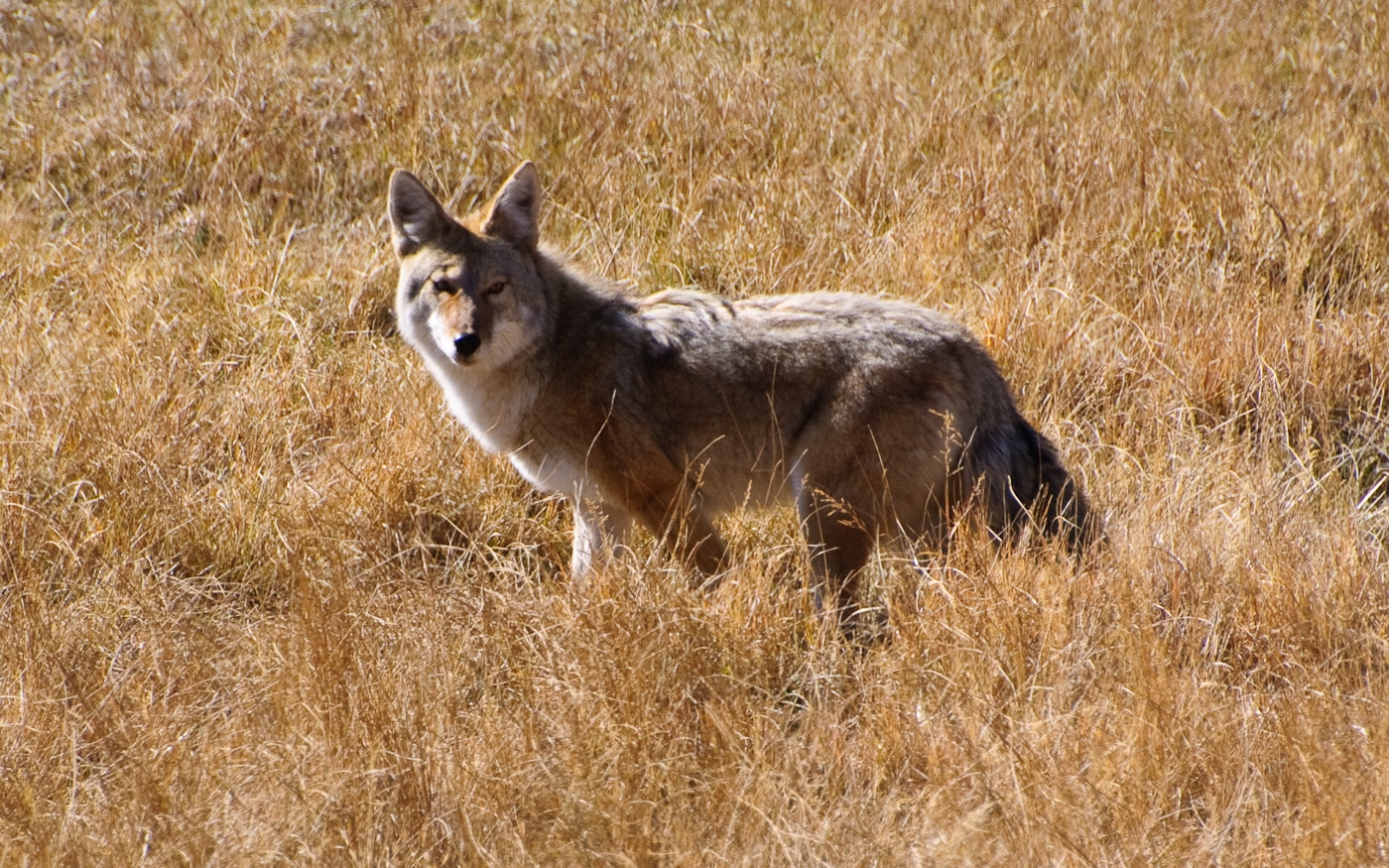
Abundant in parks, fields, suburbs, and cities, coyotes can be found almost everywhere. Often living in harmony with humans, these animals do not typically pose a threat, and attacks are uncommon. However, over a hundred coyote incidents have been recorded in North America, some of them fatal for children and pets.
Over the past twenty years, dozens of coyote-human conflicts have taken place in Colorado, many of which resulted in bites. If you are in coyote territory, keep children and small pets close at all times. Never feed a coyote under any circumstances.
You’ll city coyotes within the Denver metropolitan area as well, usually in parks or roaming neighborhoods. I’ve spotted ones in Lone Tree, Sloans Lake, Highland, and a single coyote toward the Metro campus in Downtown Denver at Santa Fe and Colfax Ave.
When possible, simply let a coyote go about its day and try not to influence its decision-making. If you are approached by a “prairie wolf” (or if one is digging in your trash), do your best to scare it off. This includes making loud noises, throwing rocks, and intimidating them to return to the wild.
Small Mammals

From the inner cities to the alpine forests, Colorado is full of small mammals that can be potentially dangerous in the event of an attack. If provoked, species such as raccoons, prairie dogs, rabbits, bats, marmots, skunks, badgers, squirrels, rats, and more may fight back and cause damage to both people and pets.
And while an encounter with a rodent or raccoon is rarely fatal, some of the diseases these critters may carry are potentially more harmful. Whether it be worms, rabies, or an outbreak of the plague, any scratch or contact with a wild animal should always be thoroughly treated for possible infections.
Rattlesnakes
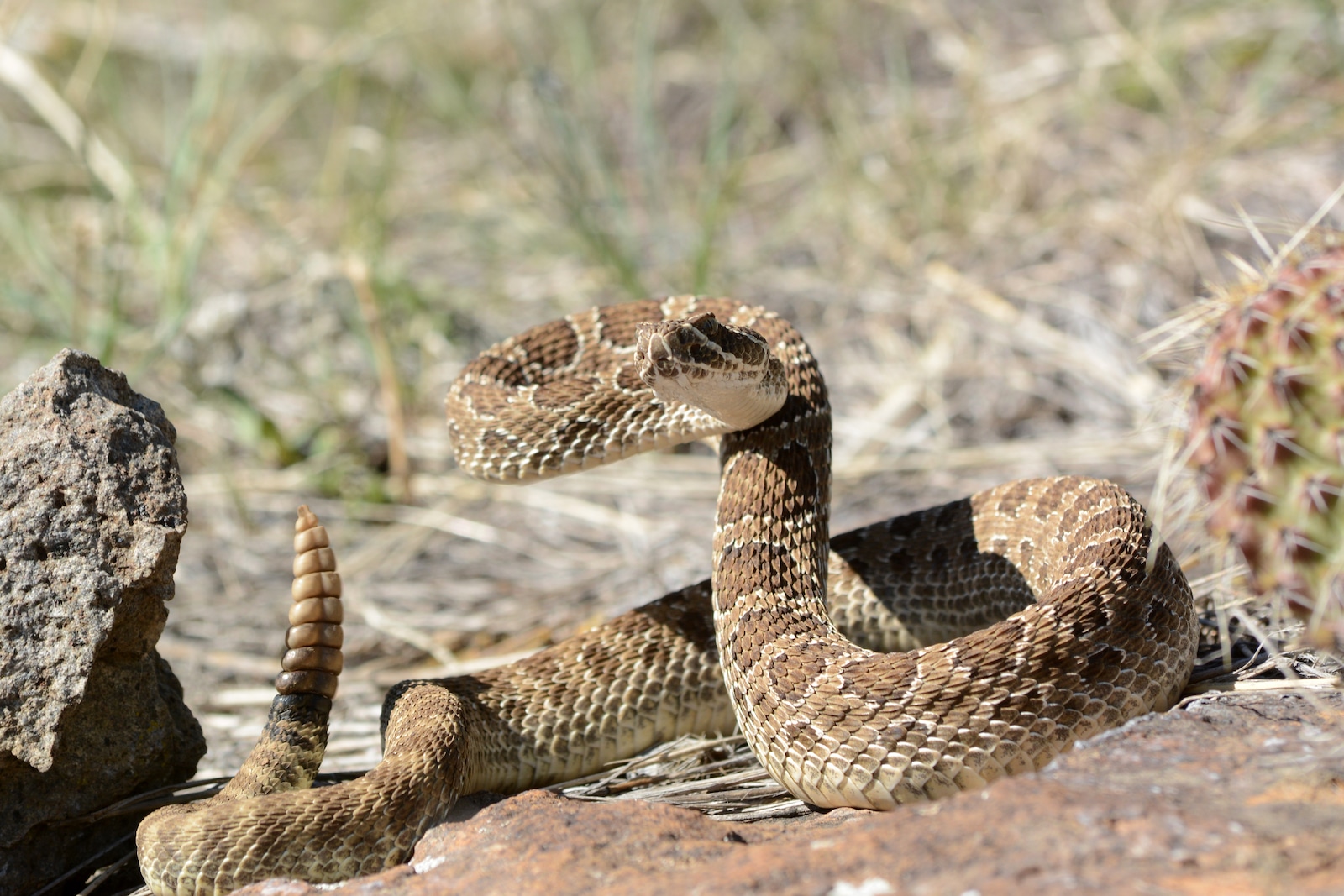
There are three different species of rattlesnakes in Colorado, with common prairie rattlesnakes found on both sides of the mountains that split the state. Midget-faded rattlesnakes can be spotted in the Green and Colorado River basins, and two subspecies of massasaugas live in the southeast and into Kansas.
The presence of rattlesnakes is a strong reminder to carry a first aid kit with you when recreating outside. Whether you are hiking, camping, mountain biking, or even doing some backcountry birdwatching in a well-known rattlesnake area, it is strongly advised to come prepared with the tools and knowledge to properly treat a wound.
As far as prevention goes, rattlesnake bites are very avoidable. Only a handful of fatal bites have been reported in the state since 1999, and most wounds can be properly treated. The sound of the rattle, while scary, is a warning to back away from an area; heed the sound. If you encounter a rattlesnake, try not to affect its direction of travel; do not antagonize it, and attempt to slowly back away.
Spiders
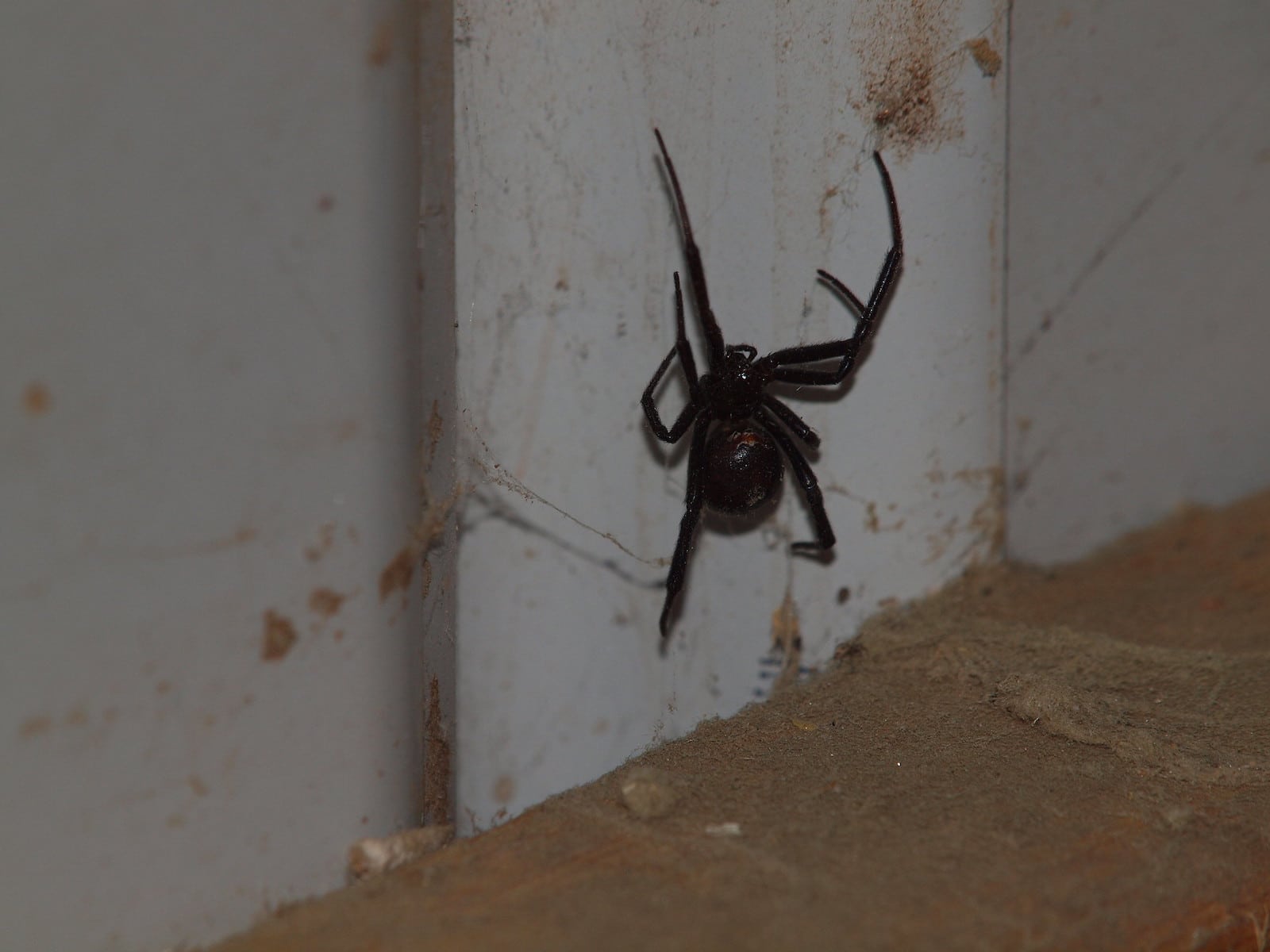
Although many people would rather visit the area before the La Junta tarantula migration, these famously furry arachnids, like most spiders, are not dangerous. Instead, those with and without phobias can truly only be harmed by two venomous spiders in Colorado: the brown recluse and the black widow.
This pair of colorfully named spiders both contain venom that is potentially fatal to humans, although this is very unlikely in the case of the brown recluse. And while black widows seldom attack unless defending their web, their bites can be treated easily and are often both self-resolving and non-fatal.
Even though the pain may be excruciating, most spider bites can be treated using a basic wilderness first aid kit. Besides the brown recluse and the black widow, there are also several species of spiders in Colorado with venom that may be harmful to dogs and other animals.
Ticks
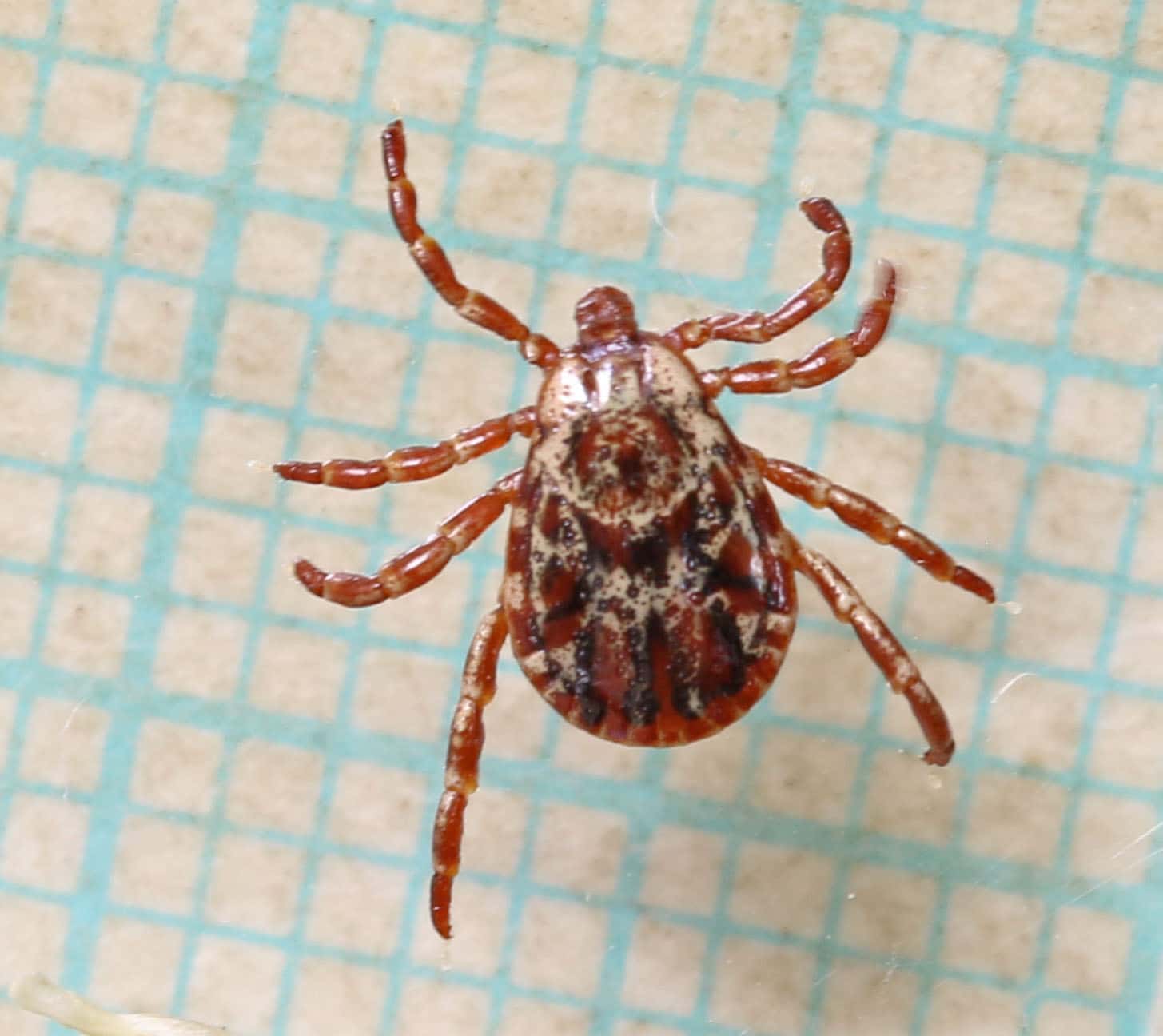
Finally, there’s one more creepy-crawly thing to look out for in the wild of Colorado: ticks. If you’ve been exploring shrubby areas with tall grass, always make sure to check yourself for unwanted passengers, especially in the spring and summer. While the insects themselves are not harmful, Rocky Mountain wood ticks may transmit spotted fever, Colorado tick fever, tularemia, and more.
To avoid a bite, always stick to established trails when possible, and do not pass through areas with dense foliage. To dramatically decrease your chances of being bitten, try to wear long sleeves and pants to cover your skin and apply repellent to your clothing and equipment.
After a tick has latched itself to your skin, do not panic. Even if it was discovered during your post-hike “tick check,” most Rocky Mountain wood ticks (the most common species in the state) don’t usually begin to feed within the first 12 hours. With tweezers or a pair of protected fingers, simply grasp the insect on two sides and slowly pull it away from the bite before treating the wound.
Preventing and Surviving Wildlife Attacks

Encompassing multiple ecosystems from the high deserts and great plains to the Rocky Mountains, Colorado has its fair share of dangerous animals. Although the possibility of a harmful or fatal encounter is statistically unlikely for most hikers, campers, and others enjoying the outdoors; unfortunately, incidents do happen every year.
Let’s take a quick look at a few baseline ideas to prevent any kind of wildlife incident. No matter where you are in the world, there are a few golden rules for interacting with a potentially dangerous animal.
To survive and prevent wildlife attacks, remember to:
- Remain calm at all times
- Never feed a wild animal
- Keep children and pets close
- Exercise common sense
- Stay a safe distance away
- Come prepared with a first-aid kit
- Don’t take any wild animal encounter for granted, even normally benign species can react aggressively if they are defending offspring or a nest/den.
Keeping Wildlife Wild
To prevent a wildlife encounter from happening before it’s too late, always minimize your impact on any natural habitat. Stick to existing trails, established campsites, known fishing spots, and other areas designated for recreation before potentially invading a place that another species calls home.
In the unfortunate circumstances of an attack, most captured animals are typically put down to prevent further damage to both the animal and its ecosystem. Remember, after an incident, be sure to report any potentially dangerous animal behavior to Colorado Parks and Wildlife as soon as you are safe.


 Colorado’s Neighbors
Colorado’s Neighbors